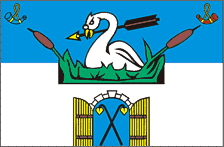
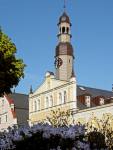
Welcome to the Chrastava website


Dear friends, warm greetings to those of you who are visiting the website of Chrastava. Our intention is to give you some basic information about our town.
If you intend to visit Chrastava and / or if you need some more detailed information, please contact our colleagues at the Information bureau, tel. + 420 485 13 161, mailto: info@chrastava.cz, or Mrs. Karin Cinibulkova at the Social Club, tel.: + 420 485 143 34, mailto: cinibulkova@chrastava.cz (German and English), or the assistant to the mayor, Mrs. Katerina Pokorna, tel.: + 420 482 363 812, mailto: pokorna@chrastava.cz (English, German or Italian language). For Polish language assistance in case of emergency please contact our assistant Mr. Slawonir Patalas, tel.+ 48 796 005 453, (mailto: s.patalas@interia.eu).
Ing. Michael Canov – mayor
:: The
history of Chrastava
:: Town
:: Museums
in Chrastava
:: Chrastava‘s
festivitie
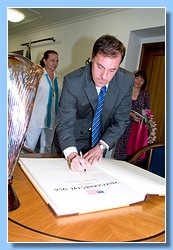
On Wednesday 14th September 2011 visited Mr. Trevor Wysong, Secretary for Political Affairs of USA Embassy accompanied by political analyst of Embassy Mrs. Jana Kernerová our
town.
Meeting was to familiarize with the regional and local political and economic situation. The main purpose was to visit places that one year ago were affected by devastating
floods.
In the interview with the mayor Michael Canov and Deputy mayor Zita Václavíková not only the details about last year´s
floods, but also the present situation was discussed.
The finanacial contribution of the American Embassy, which was sent during the the floods on account of ADRA was highly appreciated.
After the handover of mutual gifts guests visited the place of previously located Art Nouveau
Bridge, Pobřežní Street and transborder in Andělská Hora.
At the conclusion of the visit the mayor said goodbye to the guests of honour on the newly rebuilt bridge in front of the elementary school in Vítkov.
Both guests then proceeded to Frýdland v Čechách, Hrádek nad Nisou and Regional Office in Liberec.
On 16th March 2010 the newly reconstructed building of Social club so called Centre of leisure activity was opened in Chrastava. In this building are working hobby groups, there are being held music, languages and motion education courses and the main hall where the opening ceremony started is being intended for cultural and social events. Among the invited quests was also the delegation of the Polish Partner City Lwówek Śląski. The mayor Michael Canov in this allocution recalled the historical data of this building. Opening session took place in baptism of the symbolic key to the building. This act was performed by individual godparents, who are also enrolled in the chronicle. Part of the celebration was a performace of music pupils courses and at the same time the club boasted its modern technical equipment. The guests viewed the entire building incl. schoolrooms, dance hall and up-to-date equipped kitchen. In the main hall, but also in other aeras the guests could see the exhibition of art works of authors of Chrastava and of Polish Partner City Lwówek Śląski.
Videoklip
The town of Chrastava is situated in the valley of the Jeřice River, about 10 km north-west of Liberec. During the 9th and 10th centuries the Slavonic tribe of Milcani founded a small settlement here.
In Olden Times
In olden times Chrastava was part of Zagost district, and later for more than six hundred years it belonged to Grabstejn demesne. In the surrounding area three guardian strongholds (Hamrstejn, Rajmond and Grabstejn) were built, protecting the pathway from central Bohemia to the Baltic.
The oldest written records date from the year 1352 and you can find these in the clerical book Registra decimarum papalium. The King of Bohemia, Přemysl Otakar I, invited German settlers to the underpopulated borderland and enabled them to comply with German laws in the Bohemian territory; as such the 13th and 14th centuries saw high German colonization.
In the manor of Donín the mining of metals (iron, copper, zinc, lead, silver) was carried out for several thousand years and so Chrastava, between the 13th and 17th centuries, became an important mining centre.
During the years 1428 to 1433 the Hussites passed through Chrastava during the so-called graceful-trips to Germany.
The mining of ores ended in the 16th century, when the Grabstejn demesne belonged to Silesian Lord of Jiří Mehl of Střelic. In 1581 this squire awarded Chrastava the town heraldry, which is valid to this day. Mehl was vice-chancellor of the Imperial palace of Rudolf II.
Thirty Years War
Immense damage was caused during the Thirty Years War. The wooden town hall was twice burned down as the troops of the Swedish and Croatian armies marched through the town, robbing and plundering. The mining activity was almost stopped.
After the Battle of White Mountain (1620) several hundred local people left the country due to their non-Catholic beliefs. The town was affected by frequent floods on the Jeřice River joining the Nisa River. Many wooden buildings were destroyed by perilous fires, and the plague epidemic twice took many lives.
Since 1704 the Grabstejn demesne has belonged to the parentage of Gallas, later on Clam-Gallas.
Art and Architecture
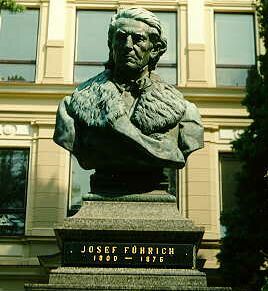
The most famous native of Chrastava is the painter Josef Führich (1800-1876), and a claim to fame of the town is the fact that 10 painters were either born or spent much of their lives here.
The focal point of the town is the Gothic Revival St. Lawrence Church. A notable building is also the town hall (1636) with its high wooden tower. On the town square you can also find the Marian plague pillar (1732). Located in the town centre are several traditional half-timbered houses and three secession buildings.
The 19th century to the present day
The 19th century was a period of industrialization. Twenty textile factories were built and Chrastava became an important industrial centre of North Bohemia. In 1859 the railway-line from Liberec to Zittau was completed and put into operation.
In the period of the so-called First republic the Czech minor school was opened under the permanent direction of Bohumil Honsa.
Between 1936 and 1938 many fortresses were built in the town’s neighbouring areas.
From 1938 to the end of the Second World War Chrastava became a direct part of Hitler‘s Great German Empire. The largest textile factory was converted to the Spreewerke ammunition works where more than three thousand foreign workers were employed, among them hundreds of Jews from France and Holland.
After the Second World War textile production was restarted and the production of several types of textile machines (Elitex) was established.
At present the town, which includes Andelska Hora and both Dolni and Horni
Vitkov, has 6000 inhabitants. Many families live in modern flats in the
neighbourhood of Střelecký vrch, and a few houses with domiciliary services
were built as well as a new school dining hall. The textile industry has seen
its fortunes decline while, conversely, the production of pressed components for
cars is developing.
Chrastava is an industrial town with 6000 inhabitans situated in the valley of the Jeřice and Nisa Rivers about 10 km north-west of the regional capital Liberec. The town has an altitude of between 270-350 metres and is surrounded by hills and mountains in almost every direction. From west to south is the Ještěd ridge, to the northeast you will find the Jizera mountains, while the Lusatian mountains begin to the town’s north-west. The northern border of the town forms the state boundary with Poland.
St. Lawrence Church
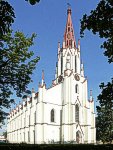
The most notable focal point is the St. Lawrence Church, an expressive picturesque Gothic Revival building located on the low townhill. A wooden church is believed to have been sited here in the 14th century, often undergoing reconstruction until by the end of 16th century a monumental stone tower was annexed, which exists up to the present day. Between 1866 and 1868 the church was rebuilt along modern lines. Within the church you can see, in addition to an original organ, a few altarpieces from some natives of Chrastava, namely J. Führich, W.Kandler and G. Kratzmann. Beside the church is the clergyman´s house, built in baroque style, dating from 1739.
Town square
The town square has existed in Chrastava for centuries. Between 1565 and 1765 it hosted public executions. Even in the first half of the 19th century the majority of houses on the town square were constructed of wooden-frame, but after many destructive fires only stone-walled houses were built. On the square you can find a few houses with an Imperial front, e.g. the municipal town hall. The town hall has been remodified several times and the present exterior dates from the mid-19th century, the last reconstruction being completed in May 2005.
In the centre of the square the baroque sandstone fountain, dating from 1707, is situated, and nearby is the most historical and valuable monument in Chrastava - the baroque Marian sculptural group‘s so-called plague pillar of 1732. Experts are of the opinion that the sculptural group consisted of sculptors from the workshop of Matthew Braun.
Town museum
On the corner of the square near the town hall is the Town museum. It is an original baroque building with a secession front wall. In this building you can find not only the museum but also the town information centre, library and the ceremonial hall of municipal office. The town museum has been in operation since 1996 thanks to help from the Society of Friends of Chrastava History and the municipal office, and its exhibition represents old and modern town history. Part of the museum is the Minigallery where exhibitions are held monthly ( displays have included, for example, artistic photography, ceramics, lace, and China-art).
The Führich-House, the native house of eminent painter Josef Führich, dates back to 1802. Nowadays it is a wooden-frame house and a registered national landmark. In this building the town museum branch was established, on the ground floor of which is an exhibition of period-style furniture and miscellany. The first floor houses a small museum of Josef Führich´s life and work. You can also see originals of coloured lithographs by Chrastava painter Willi Sitte and copies of works by Gustav Kratzmann and Wilhelm Kandler.
Other Architecture and Monuments
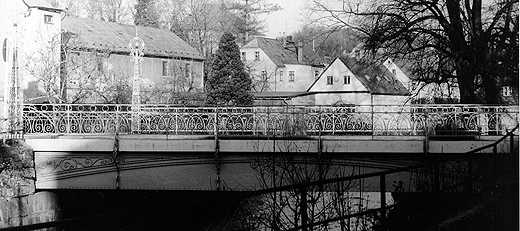
The metal secession bridge over the Jeřice River is among state registered monuments.
The secession building in Turpiš street was completed in 1904. Previously it was a private villa ( the so-called Kafka villa) before it underwent reconstruction several years ago; today it is the site of the Czech Savings Bank. Another beautiful building also completed in secession style is today the setting of the Social club.
The previously built-up area in Pobřezní and Nádražní streets is
a period monument when the majority of houses were built in wood-frame style.
You can often see both styles of wood architecture – half-timbering and casing,
and some of these cottages are listed as state registered monuments.
Museum of historic fire-fighting techniques
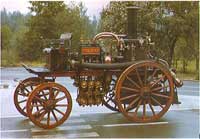
The unique museum of historic fire-fighting techniques was established in 1997 thanks to the combined efforts of the Volunteer Fire Company and representatives of Chrastava. Nowadays it is the second largest museum of its kind in the Czech Republic.
The permanent exhibition is continuously evolving and currently represents about 60 large exhibits, predominantly horse-span manual and motor fire pumps.
The museum collection offers many smaller exhibits directly connected with the history and development of fire-fighting techniques, e.g. fire-fighters‘ uniforms, fire-hats, firemen´s axes, and decorations and diplomas.
Real rarities include the fire-gun which sounded the fire alarm, and the oldest fire-pump of the collection, which originates from 1778.
During Chrastava’s June festivities members of the Volunteer Fire Company re-enact the old techniques, which are as functional now as they were in the old days.
Town museum
On the corner of the square near the town hall is the Town museum. It is an original baroque building with a secession front wall. In this building you can find not only the museum but also the town information centre, library and the ceremonial hall of municipal office. The museum has been operational since 1996 thanks to help from the Society of Friends of Chrastava History and the municipal office, and its exhibition represents old and modern town history. Part of the museum is the Minigallery, where exhibitions are held monthly ( displays have included, for example, artistic photography, ceramics, lace, and China-art).
The Führich-House
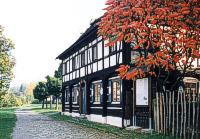
The Führich-House, the native house of eminent painter Josef Führich, dates back to 1802. Nowadays it is a wooden-frame house and a registered national landmark. In this building the town museum branch was established, on the ground floor of which is an exhibition of period-style furniture and miscellany. The first floor houses a small museum of Josef Führich´s life and work. You can also see originals of coloured lithographs by Chrastava painter Willi Sitte and copies of works by Gustav Kratzmann and Wilhelm Kandler.
The summer solstice is celebrated annually at the end of May or the beginning of June. The festivities, a conception of a few members of the municipal office, started in 1996 with the aim of increasing civic pride, and its legacy sees several days of cultural events and a sports programme for people of all ages. The streets of Chrastava are transformed into the market place of an old Bohemian fair and the high spot of the evening is the fireworks.
Today, the importance of this event has traversed international borders with visitors attending from Poland and Germany, in particular Chrastava’s partnership towns, Eichstätt and Lwówek Śląski.
:: Welcome
:: The history
of Chrastava
:: Town
:: Museums in
Chrastava
:: Chrastava‘s
festivities
:: Transporter
Bridge to Help Chrastava and Revive Prague (8. 10. 2010)
:: Czech - Poland border (5. 2. 2016)